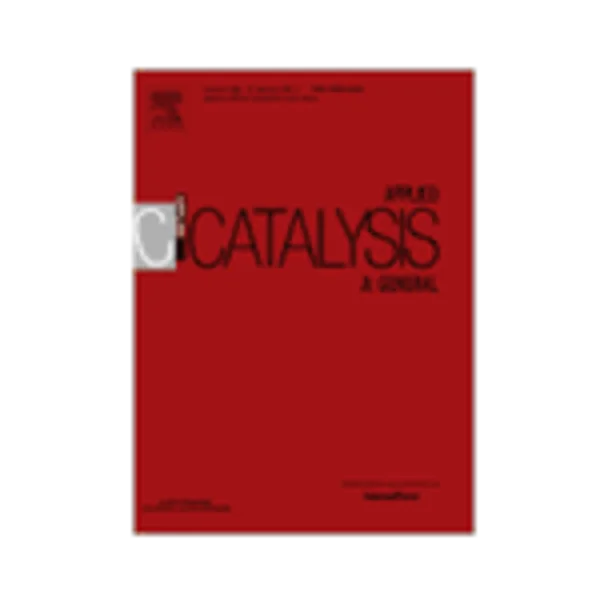-
turning teflon-coated magnetic stirring bars to catalyst systems with metal nanoparticle trace deposits – a caveat and a chance
جزئیات بیشتر مقاله- تاریخ ارائه: 1392/07/24
- تاریخ انتشار در تی پی بین: 1392/07/24
- تعداد بازدید: 1000
- تعداد پرسش و پاسخ ها: 0
- شماره تماس دبیرخانه رویداد: -
it could be an unintentional effect to deposit metal nanoparticles on a simple teflon-coated magnetic stirring bar. rhodium nanoparticles, as an example, were reproducibly deposited onto a standard, commercial teflon-coated magnetic stirring bar by easy and rapid microwave-assisted decomposition of the metal carbonyl precursor rh6(co)16 in the ionic liquid 1-n-butyl-3-methyl-imidazolium tetrafluoroborate. such metal nanoparticle deposits are not easy to remove from the teflon surface by simple washing procedures and present active catalysts which one is not necessarily aware of. barely visible metal-nanoparticle deposits on a stirring bar can act as trace metal impurities in catalytic reactions. as a proof-of-principle the rhodium-nanoparticle deposits of 32 μg or less rh metal on a 20 mm × 6 mm magnetic stirring bar were shown to catalyze the hydrogenation reaction of neat cyclohexene or benzene to cyclohexane with quantitative conversion. rhodium-nanoparticle-coated stirring bars were easily handable, separable and re-usable catalyst system for the heterogeneous hydrogenation with quantitative conversion and very high turnover frequencies of up to 32,800 mol cyclohexene × (mol rh)−1 × h−1 under organic-solvent-free conditions.
مقالات جدیدترین رویدادها
-
استفاده از تحلیل اهمیت-عملکرد در ارائه الگوی مدیریت خلاقیت سازمانی و ارائه راهکار جهت بهبود
-
بررسی تاثیر ارزش وجوه نقد مازاد بر ساختار سرمایه شرکت های پذیرفته شده در بورس اوراق بهادار تهران
-
بررسی تأثیر سطح افشای ریسک بر قرارداد بدهی شرکت های پذیرفته شده در بورس اوراق بهادار تهران
-
بررسی تأثیر رتبه بندی اعتباری مبتنی بر مدل امتیاز بازار نوظهور بر نقد شوندگی سهام با تأکید بر خصوصی سازی شرکت ها
-
تأثیر آمیخته بازاریابی پوشاک ایرانی بر تصویر ذهنی مشتری پوشاک ایرانی (هاکوپیان)
-
تحلیل اثرات پاندمی covid-19 بر کیفیت خواب و شیوع افسردگی دانشجویان دانشگاه آزاد اسلامی واحد رشت
-
بررسی ارتباط ژئوشیمی عناصر جزئی و نادر خاکی با کانی های مزاحم فسفاته در معدن شماره 1 شرکت صنعتی و معدنی گل گهر سیرجان استان کرمان
-
بررسی تاثیر ارزیابی محصول از سوی مصرف کننده و محیط تجارت الکترونیک بر قصد خرید مجدد (مورد مطالعه: مشتریان تجهیزات پزشکی در استان تهران)
-
an integrated microfluidic platform for rapid detection and subtyping of influenza viruses from clinical samples
-
strong and weak gravitational field in r +μ4/r gravity
مقالات جدیدترین ژورنال ها
-
مدیریت و بررسی افسردگی دانش آموزان دختر مقطع متوسطه دوم در دروان کرونا در شهرستان دزفول
-
مدیریت و بررسی خرد سیاسی در اندیشه ی فردوسی در ادب ایران
-
واکاوی و مدیریت توصیفی قلمدان(جاکلیدی)ضریح در موزه آستان قدس رضوی
-
بررسی تاثیر خلاقیت، دانش و انگیزه کارکنان بر پیشنهادات نوآورانه کارکنان ( مورد مطالعه: هتل های 3 و 4 ستاره استان کرمان)
-
بررسی تاثیر کیفیت سیستم های اطلاعاتی بر تصمیم گیری موفق در شرکتهای تولیدی استان اصفهان (مورد مطالعه: مدیران شرکتهای تولیدی استان اصفهان)
-
ارائه روش نظام مند حسابرسی مبتنی بر ریسک در صنعت بانکداری
-
استفاده از سامانه تجزیه و تحلیل خطر و نقاط کنترل بحرانی برای تولید آب آشامیدنی سالم: مطالعه مروری
-
ارائه مدلی برای بازاریابی شرکت های دانش بنیان در استان البرز
-
increasing the contribution of gfrp bars on the compressive strength of concrete columns with circular cross section
-
investigate the effect of services compensation system on employee performance in forensic of kohgiluyeh and boyerahmad province




سوال خود را در مورد این مقاله مطرح نمایید :